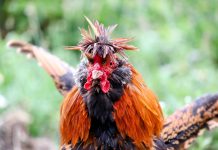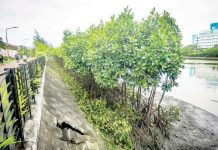
QUEEN pineapple, a treat for tropical fruit lovers, is a smaller but sweeter variety of pineapple in the Philippines which is enjoying growing local and international demand.
Despite being more resistant to pests compared with the other common pineapple varieties, some insect pests and diseases still pose threat to its quality and high yield potential.
To address this concern, the Visayas State University (VSU) identified potential biological control agents that could be used in developing sustainable, safe and environment-friendly control strategies for insect pests affecting the variety.
Biocontrol agents are organisms used in controlling pests through predation (i.e., organism preying on the pest), parasitism (i.e., an organism causing harm on its host organism), or other natural mechanisms.
The initiative was done through the project “Development of Site-Specific Sustainable Pest Management of Queen Pineapple under Different Cropping Schemes in Leyte and Camarines Norte.
It is funded by the Philippine Council for Agriculture, Aquatic and Natural Resources Research and Development of the Department of Science and Technology (DOST-PCAARRD).
The project identified the major insect pests and diseases and assessed the presence and abundance of natural enemies and disease antagonists of Queen pineapple in Leyte.
The Pink Pineapple Mealybug or PPMB is a major insect pest of the Queen pineapple in Leyte.
It infests the roots of the Queen pineapple, leaves and fruits in the project sites.
It was learned that a large number of PPMB in Queen pineapple plants may increase their risk to the wilt disease which could lead to death or reduced fruit quality and yield.
Major diseases infecting Queen pineapple, on the other hand, include anthracnose and heart rot.
Anthracnose was found to be the most prevalent disease in all project sites.
The disease causes dark brown to black spots with sunken appearance on the Queen pineapple plants, while in severe cases, dried and wilted looking leaves are observed.
The project identified predatory earwig insect, Hambletonia pseudococcina parasitoid, and insect-harming fungi as potential biocontrol agents for the PPMB.
It was noted that predatory earwigs consume up to 100 PPMB crawlers in a day.
It could likewise parasitize up to eight PPMB adults.
On the other hand, the insect-harming fungi, Beauveria sp., Lecanicillium lecanii and Metarhizium anisopliae can potentially control PPMB by infecting and eventually killing it.
Botanical extracts are likewise recommended by the project team as a cleaner alternative to chemicals in controlling Queen pineapple pests.
Regarding the heart rot disease, Trichoderma sp. and Penicillium sp. fungi were identified to be the most effective against fungi causing heart rot disease.
It can be noted that Queen pineapple is a tropical fruit with increasing foreign market demand.
Along with banana and other crops, it is said to contribute to ecological resilience in agriculture.
Preferably consumed raw, the DOST-PCAARRD says Queen pineapple can be made safer for both farmers and consumers with the use of chemical-free pest and disease management strategies.
VSU hopes for the use of the project results in developing effective, sustainable, and safe control measures for Queen pineapple./PN






